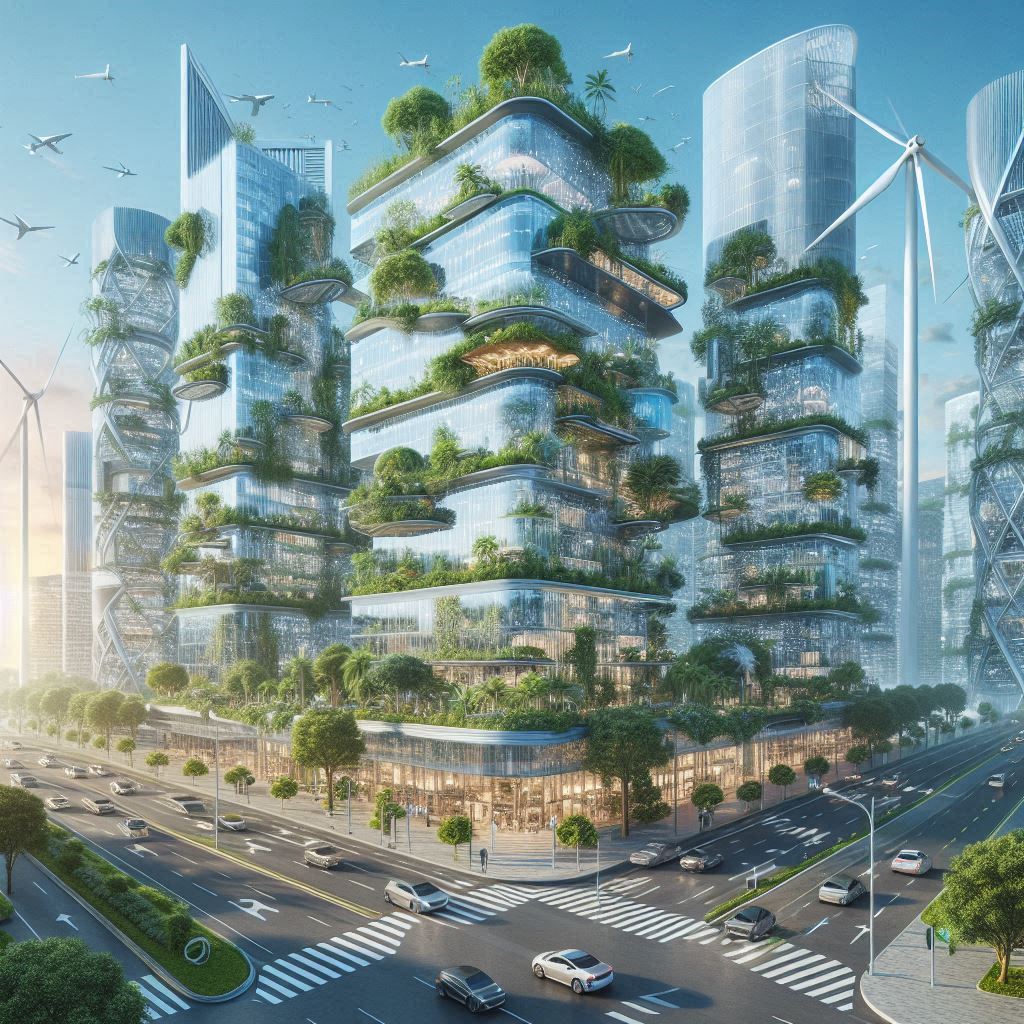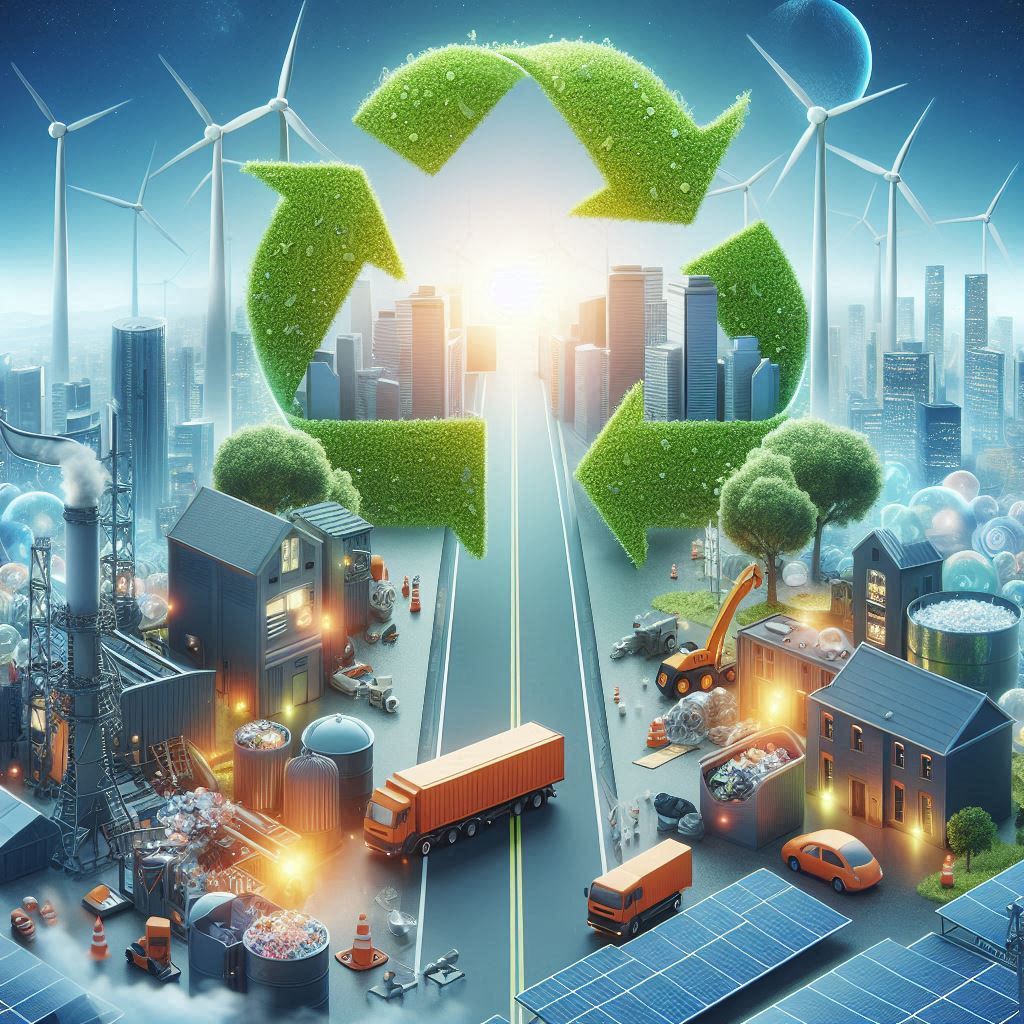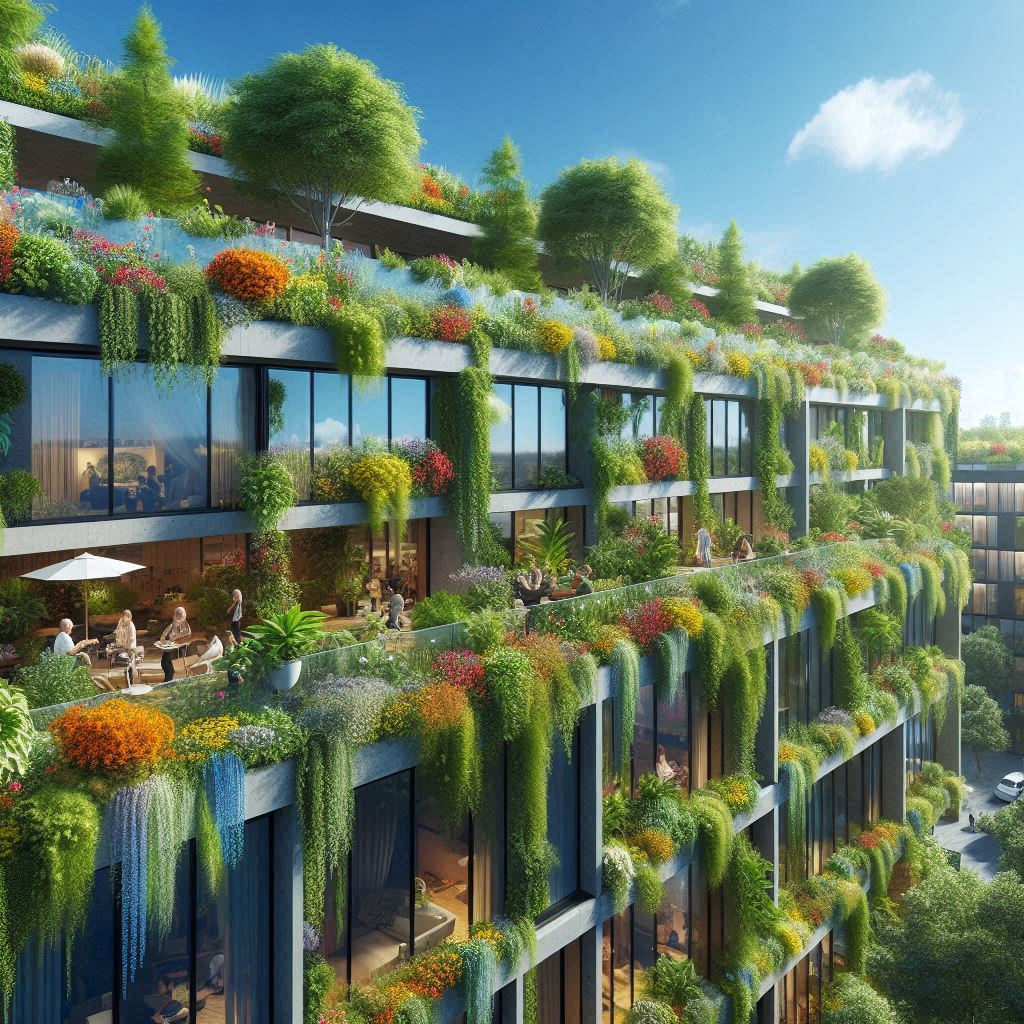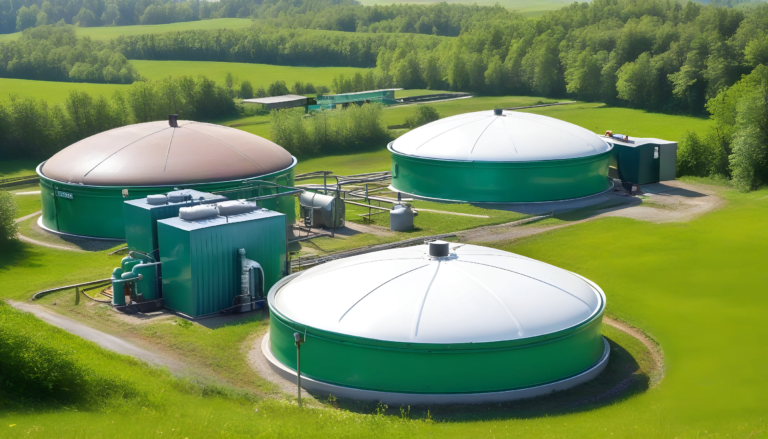Introduction: The Urgency of Green Technology in Addressing Climate Change
As the effects of climate change become more severe, the urgency to find sustainable solutions has reached unprecedented levels. Rising global temperatures, shrinking ice caps, extreme weather events, and the degradation of natural ecosystems highlight the critical need for innovative interventions. Sustainable green technology emerges as a crucial player in addressing these pressing environmental challenges. By harnessing the power of technology, we can reduce our ecological footprint, cut greenhouse gas emissions, and foster a more sustainable future for generations to come.
Sustainable green technology refers to innovations that are designed to reduce environmental impact and promote resource efficiency. These technologies range from renewable energy solutions like solar and wind power to advanced waste management systems, eco-friendly building materials, and smart agriculture practices. The key to sustainable green technology is its ability to minimize the depletion of natural resources while mitigating environmental pollution. By reducing reliance on fossil fuels and promoting circular economies, these technologies are essential for combating climate change and conserving biodiversity.

The importance of sustainable green technology cannot be overstated. As global populations rise and industrialization continues to expand, the demand for energy and resources grows. Traditional methods of production and consumption are no longer viable for long-term environmental health. Green technology not only helps reduce pollution but also enhances energy efficiency, conserves water, and promotes the use of renewable resources. For example, solar panels and wind turbines provide clean energy alternatives, reducing dependence on fossil fuels and cutting down on harmful emissions.
In recent years, green technologies have gained momentum in the global market. Many countries and corporations are investing in these innovations, recognizing their potential to drive economic growth while preserving natural resources. From renewable energy startups to major corporations integrating sustainable practices into their operations, the adoption of sustainable green technology is becoming a mainstream trend. Governments are also stepping in, providing incentives and regulations to promote the use of eco-friendly technologies.
In this blog, we will delve deeper into the various dimensions of sustainable green technology, exploring living green technology, which merges nature with technology for a harmonious environment, and examining the critical relationship between green technology and sustainability. By understanding how these innovations work together, we can better grasp their potential to shape a sustainable future. Readers will also discover real-world examples and case studies showcasing how these technologies are being implemented across different sectors to reduce ecological footprints and promote long-term environmental health.
The Concept of Sustainable Green Technology
Sustainable green technology refers to the development and implementation of innovations aimed at preserving environmental health while minimizing our ecological footprint. These technologies are designed to meet the needs of the present without jeopardizing the ability of future generations to meet theirs. At its core, sustainable green technology focuses on reducing waste, minimizing carbon emissions, and improving energy efficiency to create a balance between human activities and nature.
As environmental concerns like climate change, biodiversity loss, and resource depletion intensify, the demand for sustainable green technologies has surged. Solutions like wind turbines, solar panels, and advanced water purification systems are playing pivotal roles in reducing our dependence on pollution-heavy processes and fossil fuels, contributing directly to the reduction of greenhouse gases and mitigating the adverse effects of human industrialization.
Key Areas of Sustainable Green Technology
- Renewable Energy:
Renewable energy sources, such as solar, wind, and hydropower, are at the forefront of the global energy transition, reducing our reliance on fossil fuels. Solar power harnesses sunlight using photovoltaic cells, while wind turbines convert kinetic energy into electricity, and hydropower utilizes flowing water. Unlike finite fossil fuels, renewable energy is inexhaustible, and most importantly, it produces minimal greenhouse gases and pollutants. This makes renewable energy essential in combating climate change and reducing carbon emissions. Countries like Germany and Denmark are leading examples, where renewable energy supplies a significant portion of their national energy grids. - Energy Storage Systems:
One of the major challenges with renewable energy sources is their intermittency—solar panels only produce energy when the sun is shining, and wind turbines when the wind is blowing. This has spurred the development of advanced energy storage systems, like lithium-ion batteries and grid-scale solutions. By storing surplus energy during peak production, these systems stabilize supply and ensure consistent access to electricity. Innovations in energy storage are also reducing the cost of renewable energy integration, paving the way for a future where energy grids can be largely powered by renewables.

- Green Building Technologies:
The construction industry is increasingly turning to green building technologies that prioritize energy efficiency and sustainability. This includes the use of eco-friendly materials like bamboo and recycled steel, and the design of buildings that reduce energy consumption. Passive solar designs, energy-efficient insulation, and smart building systems that adjust heating, lighting, and cooling based on occupancy are all becoming standard in sustainable construction. These technologies not only cut down energy use but also improve indoor air quality and contribute to overall well-being. - Waste Management and Recycling:
Modern waste management technologies, such as advanced recycling techniques, pyrolysis, and anaerobic digestion, are transforming the way we handle waste. These technologies ensure that waste products, including plastics and organics, are either reused, recycled, or converted into energy rather than being dumped in landfills. In bioreactors, for example, microorganisms break down organic waste to produce biogas, which can be used as a clean energy source. Additionally, recycling innovations are helping to create a circular economy, where products are designed with their entire lifecycle in mind—reducing the need for virgin materials and decreasing overall environmental impact.
Living Green Technology: Integrating Nature into Modern Life
Living green technology goes beyond traditional approaches by directly incorporating nature into technological systems. This concept focuses on creating a symbiotic relationship between human activities and natural ecosystems, ensuring that our technological advancements benefit, rather than harm, the environment.
Examples of Living Green Technology:
- Green Roofs and Walls:
Green roofs and walls are increasingly popular in urban areas as they offer a natural solution to city heat, improve air quality, and provide insulation. These vegetative structures absorb rainwater, reduce the urban heat island effect, and create habitats for wildlife in densely populated areas. Beyond environmental benefits, they also contribute to mental well-being by introducing greenery into otherwise concrete environments.

- Biofiltration Systems:
Biofiltration systems use plants and natural organisms to purify air and water. These systems are employed in both industrial and urban settings to remove pollutants, reducing the need for chemical treatments. For example, constructed wetlands use plants to filter out contaminants from wastewater, while green walls in buildings help filter indoor air by absorbing toxins and releasing oxygen. - Urban Farming:
Urban farming technologies, including rooftop gardens and vertical farming systems, allow for the cultivation of crops in city environments. These techniques reduce the carbon footprint associated with transporting food from rural areas to urban centers. Moreover, they help address food security issues in cities by providing a local and sustainable source of fresh produce.

- Algae-Based Technologies:
Algae are emerging as a powerful tool in the green technology landscape due to their ability to sequester carbon dioxide and their potential as a renewable resource. Algae-based systems can be used to capture CO2 emissions from industrial processes, convert sunlight into biofuel, and even provide sustainable food sources rich in nutrients. Some cities are experimenting with algae-based bioreactors to not only clean air but also produce energy.
Green Technology and Sustainability: Redefining Global Development
Green technology and sustainability are deeply intertwined in the effort to tackle climate change and promote economic development without depleting natural resources. Green technology serves as the practical means by which sustainability goals can be achieved, influencing sectors ranging from agriculture to transportation.
How Green Technology Enhances Sustainability:
- Energy Efficiency:
Energy-efficient technologies are critical for reducing global energy consumption. Smart grids allow for real-time energy management, ensuring electricity is distributed more efficiently. Similarly, energy-efficient appliances and lighting, such as LEDs, use a fraction of the power required by traditional devices, reducing energy bills and carbon footprints. - Water Conservation:
With growing concerns over water scarcity, especially in arid regions, technologies that conserve and manage water resources are becoming indispensable. Smart irrigation systems monitor soil moisture levels and deliver water precisely when and where it is needed, minimizing waste. Rainwater harvesting systems capture and store rain for future use, while desalination plants turn seawater into fresh water, helping regions with limited access to clean water. - Circular Economy:
The circular economy aims to minimize waste by extending the lifecycle of products through recycling, refurbishing, and reusing materials. Green technologies like 3D printing with recycled plastics and converting waste into energy through gasification are critical to this economic model. These innovations help conserve resources and reduce pollution while creating new economic opportunities. - Sustainable Agriculture:
Agricultural technologies such as precision farming and organic techniques are helping to increase crop yields while conserving water, reducing pesticide use, and preserving biodiversity. Drip irrigation, for example, ensures crops receive the exact amount of water they need, reducing water wastage and improving efficiency. Precision farming employs GPS and AI to monitor soil health and plant growth, allowing farmers to optimize their use of fertilizers and minimize environmental harm.
Challenges and Opportunities in the Green Technology Sector
Although green technology offers tremendous potential, it faces several obstacles. Significant upfront costs, complex regulatory frameworks, and the necessity for international collaboration create substantial barriers to widespread implementation. However, these challenges also pave the way for innovation and new opportunities for growth.
Key Challenges:
- Cost Barriers:
Many green technologies, such as solar panels and electric vehicles, require significant initial investments. Though they often pay for themselves over time through energy savings, the high upfront costs can be a barrier, particularly for small businesses and developing nations. Government incentives and financing models like green bonds are crucial for overcoming these cost hurdles. - Policy and Regulation:
The development and adoption of green technologies are heavily influenced by government policies. Regulatory frameworks that offer subsidies for renewable energy, tax breaks for eco-friendly businesses, and penalties for pollution can significantly accelerate the transition to greener industries. Without consistent policy support, however, the green tech sector may struggle to compete with established, less sustainable industries.
Future Opportunities:
- Job Creation:
The shift toward sustainable energy, construction, and waste management is creating new employment opportunities across the globe. As industries retool for a greener future, jobs in renewable energy, eco-friendly design, and sustainable agriculture are growing rapidly. According to estimates, the renewable energy sector alone could generate millions of jobs worldwide by 2030. - Global Collaboration:
Climate change is a global challenge, and solutions require international cooperation. Agreements like the Paris Climate Accord are fostering collaboration between countries to develop and share green technologies. This cooperation can help ensure that developing countries have access to the technologies they need to grow sustainably and meet their climate goals.
As the world continues to face mounting environmental challenges, the green technology sector will play a pivotal role in shaping a more sustainable and equitable future. The innovations being developed today will help mitigate climate change, conserve resources, and promote economic growth for generations to come.
Conclusion: The Future of Sustainable Green Technology
In conclusion, sustainable green technology offers solutions that can help address pressing environmental challenges while fostering economic growth and improving human well-being. By integrating living green technology into urban spaces and continuing to innovate in sectors like energy, agriculture, and water management, we can create a future where technology and nature coexist harmoniously.
The connection between green technology and sustainability will only deepen as technological advances continue to drive ecological benefits. By investing in and embracing these technologies, we can build a more resilient, efficient, and sustainable world for future generations.
Checkout our other interesting Blogs:






